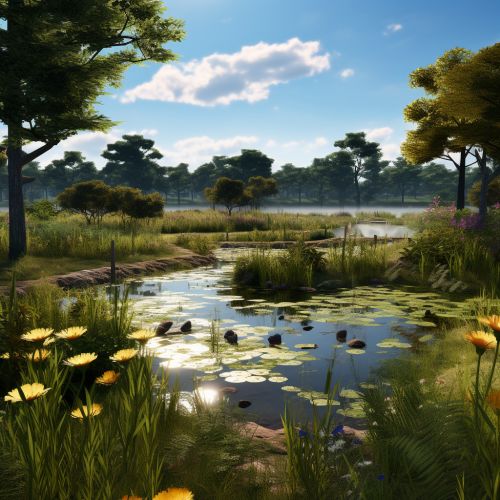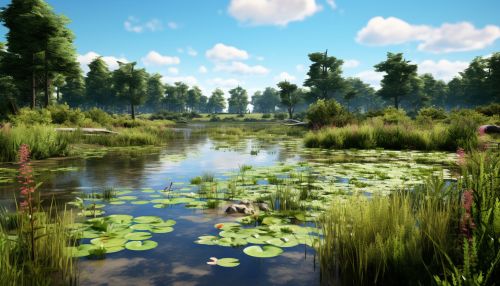Constructed wetland
Overview
A constructed wetland is a man-made, engineered complex of water bodies, vegetation, soils, and organisms designed to mimic natural wetland processes. These systems are designed to take advantage of the chemical and biological processes of natural wetlands, such as denitrification, anaerobic decomposition, plant uptake, and sedimentation, to treat polluted water.
History
The concept of constructed wetlands for wastewater treatment emerged in the United States in the 1960s. The earliest systems were primarily designed for wildlife enhancement and aesthetic improvement, but it was soon discovered that they could also provide significant water treatment benefits.
Types of Constructed Wetlands
Constructed wetlands can be classified into two main types: surface flow and subsurface flow.
Surface Flow Constructed Wetlands
Surface flow constructed wetlands (SFCWs) are systems where the wastewater flows over the surface of the wetland. The water level is maintained above the ground surface, and the wastewater comes into direct contact with the atmosphere.
Subsurface Flow Constructed Wetlands
Subsurface flow constructed wetlands (SSFCWs) are systems where the wastewater flows beneath the surface of the wetland. The water level is maintained below the ground surface, and the wastewater does not come into direct contact with the atmosphere.
Design and Construction
The design and construction of a constructed wetland require careful planning and engineering. The size, shape, depth, and type of vegetation used in the wetland are all critical factors that can influence its effectiveness.
Function and Benefits
Constructed wetlands serve multiple functions and offer numerous benefits. They provide a cost-effective and sustainable method for treating wastewater, stormwater, and agricultural runoff. They also provide habitat for wildlife and enhance the aesthetic value of the landscape.
Applications
Constructed wetlands have been used in a variety of applications, including municipal wastewater treatment, industrial wastewater treatment, stormwater management, and agricultural runoff treatment.
Limitations and Challenges
While constructed wetlands offer many benefits, they also have certain limitations and challenges. These include land requirements, maintenance needs, and potential for mosquito breeding.
Future Directions
The future of constructed wetlands lies in the development of more efficient designs and the integration of these systems into urban and rural landscapes.
See Also


